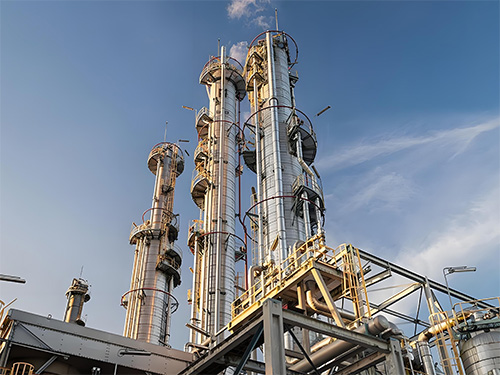
Outline
I. What is Solvent Dewaxing?
II. The Process Principle of Solvent Dewaxing
III. Key Equipment
IV. The Advantages of Solvent Dewaxing
V. Market Prospects
VI. How to Choose the Appropriate Solvent Dewaxing Equipment
VII. Conclusion

In modern petroleum refining and lubricating oil production, the solvent dewaxing process plays a crucial role. With the continuous increase in the demand for high-quality lubricating oils and petroleum products, understanding the process and equipment of solvent dewaxing has become particularly important. This article will delve into the basic principles, key equipment, process steps, and market prospects of solvent dewaxing.
I. What is Solvent Dewaxing?
Solvent dewaxing is a process for removing waxy components from petroleum products, mainly used in the production of lubricating oils and base oils. Waxes can affect the fluidity and performance of oil products at low temperatures, so removing these components is a key step to ensure the quality of oil products.
II. The Process Principle of Solvent Dewaxing
The core principle of solvent dewaxing is to utilize the property of solvents selectively dissolving oil but not wax. Typical solvents include methyl ethyl ketone (MEK) and toluene. The specific process steps are as follows:
1. Solvent Mixing: Mix the crude oil with the solvent to fully dissolve the oily components by the solvent.
2. Cooling: The mixture is cooled to make the waxy components precipitate and form solid particles.
3. Filtration/Centrifugation: Use filters or centrifuges to separate the solid wax particles from the oil-solvent mixture.
4. Solvent Recovery: Recover the solvent through distillation or evaporation to ensure it can be recycled.
5. Finishing of the Finished Product: Further refine the dewaxed oil product to meet the quality requirements of different products.
III. Key Equipment
The solvent dewaxing equipment is the core for achieving the above-mentioned process, including the following key components:
Mixer: Ensure the full mixing of the oil and the solvent.
Cooler: Precipitate the wax through cooling.
Filters and centrifuges: Used for separating solid wax particles.
Distillation column: Used for the recovery and reuse of the solvent.
Storage tanks: Used for storing raw materials, solvents, and dewaxed finished oil products.
IV. The Advantages of Solvent Dewaxing
1. Improve Product Quality: After removing the wax, the low-temperature performance of the oil product significantly improves, meeting the demands of high-end lubricating oils.
2. Improve Efficiency: Compared to other dewaxing methods, solvent dewaxing is more efficient and suitable for large-scale production.
3. Environmentally Friendly: Through solvent recovery and reuse, the impact on the environment is reduced.
V. Market Prospects
With the continuous growth of the automotive industry, machinery manufacturing industry, and other industries that require high-performance lubricating oils, the demand for the solvent dewaxing process is also increasing. At the same time, continuous technological advancements, such as the development of new solvents and the application of automated equipment, also promote the development of the solvent dewaxing market.
VI. How to Choose the Appropriate Solvent Dewaxing Equipment
Choosing the appropriate solvent dewaxing equipment requires considering multiple factors, including production scale, product quality requirements, operating costs, and environmental protection requirements. It is recommended to pay attention to the following points when choosing equipment:
Equipment Performance: Ensure the stability and efficiency of the equipment.
Easy Operation: Choose equipment that is easy to operate and maintain.
Energy Efficiency: Focus on the energy consumption of the equipment and choose energy-saving and environmentally friendly equipment.
After-sales Service: Choose equipment suppliers that provide good after-sales service.
VII. Conclusion
Understanding the process and equipment of solvent dewaxing is crucial for improving the quality of petroleum products and meeting market demands. By choosing the appropriate equipment and optimizing the process flow, production efficiency and product quality can be significantly improved, bringing greater economic benefits to enterprises.
If you have more interest or demands in solvent dewaxing equipment, welcome to contact our expert team. We will provide you with professional consultation and services. Through continuous technological innovation and service improvement, we are committed to becoming your best partner in the field of solvent dewaxing.



